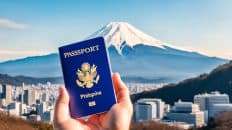The Ultimate Guide to Philippines Visa
When planning a visit to the idyllic Philippines, understanding the visa requirements is essential. Here, we dive deeper into the intricacies of obtaining a visa to ensure you have a smooth journey to this Southeast Asian gem.
1. Who Needs a Visa to Enter the Philippines?
While the Philippines offers visa-free entry to many, the duration depends largely on the traveler’s nationality:
- 30-Day Visa-Free: Nations such as the United States, Australia, most EU countries, and several Asian countries can enter the Philippines and stay for up to 30 days without needing a visa.
- 14-day visa-free: A handful of countries, often those with special arrangements, can avail of a 14-day visa-free period.
- 7 Days Visa-Free: Few countries, typically with limited ties to the Philippines, get a visa-free duration of 7 days.
For visa-free entry, travelers should ensure their passport is valid for at least six months after their intended departure from the Philippines and possess a confirmed return or onward ticket.
2. Delving into Philippines Visa Types
Understanding the purpose of your visit can help determine the appropriate visa:
- Tourist Visa: Ideal for travelers eager to immerse in the Philippines’ beauty and culture. This visa is typically valid for 59 days but can be extended.
- Business Visa: Suited for business representatives, this visa requires an invitation from a Philippine company or government agency.
- Student Visa: Students aiming to pursue education in the Philippines must apply with proof of admission from a recognized institution.
- Retirement Visa: With its serene beaches and tropical climate, the Philippines has become a popular retirement destination. This visa allows long-term stay for retirees.
- Others: This includes specialized visas for diplomats, officials, and those visiting under special courtesy.
3. The Application Process for a Philippines Visa
Embarking on the visa application journey? Follow these steps:
- Determine Eligibility: Refer to the official Philippines’ Department of Foreign Affairs website to ascertain if you require a visa.
- Compile Documents: Alongside standard documents, you might need specific ones like an invitation letter, financial statements, or school admission confirmation, depending on the visa type.
- Application Submission: Head to the nearest Philippine Embassy or Consulate. Some countries may offer an online application process.
- Fee Payment: The cost varies based on visa type and nationality. It’s prudent to check updated rates before applying.
- Possible Interview: Depending on the visa type and individual circumstances, an interview might be scheduled.
- Visa Issuance: Once approved, the visa is usually stamped on the passport.
4. Extending Your Stay
If the allure of the Philippines holds you back, you can request a visa extension at the Bureau of Immigration. While the first extension is typically for 29 days, subsequent extensions can be longer, with the total duration varying.
5. Overstaying: What You Need to Know
Remaining in the Philippines without a valid visa can result in significant penalties. It’s imperative to either extend your visa or depart before its expiration to avoid complications.
6. Final Thoughts
The Philippines beckons with its unique blend of nature, history, and culture. By adhering to visa policies and staying informed of any changes, travelers can ensure a memorable trip devoid of bureaucratic hassles.
Important: As global situations and policies evolve, visa requirements and processes can change. It’s advisable to frequently check the official website or liaise with a trusted visa consultant before embarking on your journey.


















Add comment